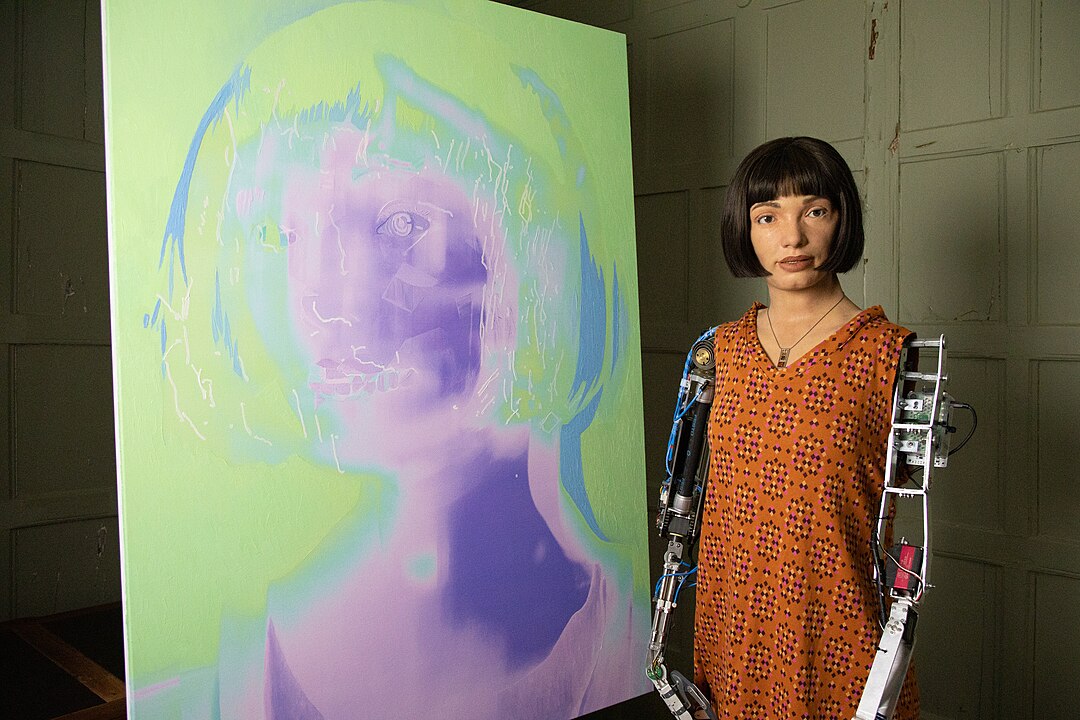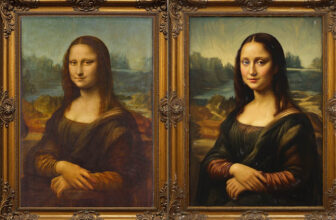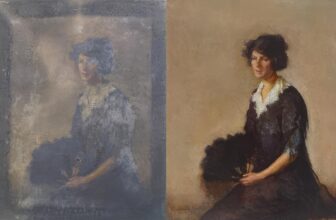
How AI and Tech Are Changing Art Investment
The Future of Collecting and Investing in Creativity
Art investment has always been a fascinating intersection between culture and commerce. From Renaissance paintings to contemporary installations, collectors have sought both emotional fulfillment and financial returns from the art world. Traditionally, this market has been opaque, exclusive, and difficult to navigate. But today, AI and technology are disrupting art investment, making it more transparent, accessible, and data-driven than ever before.
In this guide, we’ll explore in detail how artificial intelligence, blockchain, and emerging tech are changing the landscape of art investment. Whether you’re an art collector, investor, or someone curious about how to diversify your portfolio, you’ll discover why the fusion of art and technology is rewriting the rules of the game.
Why Tech Matters in Art Investment
For centuries, art investment was dominated by a small circle of wealthy collectors and institutions. Prices were often set behind closed doors, with limited transparency. Fast forward to the digital era, and we see a fundamental shift: AI tools, blockchain platforms, and online investment solutions are reshaping how people buy, sell, and evaluate art.
The global art market was valued at nearly $68 billion in 2022 (Art Basel & UBS report), and projections show continuous growth. With AI and tech solutions, investors now have access to tools that:
Analyze the financial performance of artists.
Provide fractional ownership opportunities.
Enhance liquidity in an otherwise illiquid market.
Democratize access to high-value artworks.
In short, technology is transforming art investment from an opaque passion market into a data-driven asset class.
Understanding the Traditional Art Market
Before diving into AI’s role, it’s important to understand why the art market needed disruption.
Challenges of Traditional Art Investment:
Lack of transparency: Prices often depend on private negotiations and auction house strategies.
Illiquidity: Unlike stocks or bonds, selling art takes time and connections.
High entry barriers: Masterpieces by blue-chip artists often require millions in capital.
Subjectivity: Art valuation depends heavily on expert opinion rather than quantifiable data.
These barriers made art investing inaccessible for most people. However, technology is changing that narrative.
The Rise of AI in Art Valuation and Pricing
One of the most exciting developments in art investment is AI-powered valuation. Artificial intelligence can analyze vast datasets of past sales, artist career trajectories, gallery exhibitions, and auction house results.
How AI Helps in Art Pricing:
Data-driven valuations – Algorithms compare thousands of similar works by the same artist to predict fair market value.
Trend detection – AI identifies emerging artists who show potential for appreciation.
Price transparency – Investors gain access to pricing benchmarks, reducing reliance on opaque dealer networks.
For example, platforms like Artnome and Artprice already use big data analytics to help collectors and investors make informed decisions.
Predictive Analytics: Forecasting Art Market Trends
AI doesn’t just evaluate current prices, it can also forecast future trends. Predictive analytics uses machine learning models trained on decades of art sales, economic conditions, and cultural factors to estimate future appreciation rates.
Benefits for Investors:
Identify undervalued artists early.
Understand regional art market growth (e.g., Asian contemporary art rising in demand).
Hedge against risks by analyzing how art correlates with traditional assets.
Just like AI is transforming stock market predictions, it is providing art investors with quantifiable strategies instead of relying solely on intuition.
Blockchain and NFTs: Redefining Art Ownership
If AI is making art investment smarter, blockchain is making it more secure and accessible.
Blockchain Benefits in Art Investment:
Immutable provenance: Proof of authenticity reduces forgery risks.
Transparent transactions: Every sale is recorded on a public ledger.
Fractional ownership: Investors can own “shares” of an artwork.
The Role of NFTs
Non-Fungible Tokens (NFTs) exploded in popularity in 2021, creating a new category of digital assets. While hype has cooled, NFTs remain relevant for:
Verifying digital art authenticity.
Enabling artists to earn royalties from secondary sales.
Allowing micro-investments in art.
Platforms like OpenSea, Rarible, and SuperRare have opened new markets for collectors and investors alike.
Fractional Ownership: Making Art Accessible to Everyone
Traditionally, owning a Picasso or Basquiat was only possible for billionaires. Now, with fractional ownership platforms, investors can buy shares of high-value artworks just like they buy stocks.
Advantages of Fractional Art Investment:
Accessibility: Invest in masterpieces with as little as $100.
Diversification: Build a portfolio across multiple artists and styles.
Liquidity: Some platforms allow trading shares on secondary markets.
Examples include Masterworks, Artex, and Particle, which are blending finance and art through fintech innovation.
Virtual Reality (VR) and Augmented Reality (AR) in Art Viewing
Viewing art in person has always been essential for collectors. But VR and AR are bridging the gap for global investors.
VR art galleries: Explore exhibitions from your living room.
AR previews: See how a painting looks on your wall before purchase.
Immersive experiences: Enhance art appreciation and increase buyer confidence.
This tech not only democratizes access but also helps investors evaluate artworks without physical limitations.
AI-Generated Art: A New Asset Class or a Passing Trend?
AI is not only analyzing art, it’s creating it. Tools like DALL·E, MidJourney, and Runway ML are generating artworks that collectors are buying.
Key Questions for Investors:
Is AI art collectible long-term?
How do you establish originality when multiple works can be generated?
What role do copyright and ownership play?
Some AI-generated works have already sold at major auction houses (e.g., Christie’s sold “Edmond de Belamy” for $432,500). Whether it becomes a lasting category or a speculative bubble remains to be seen.
Digital Marketplaces and Online Auctions
The pandemic accelerated online art sales, and platforms like Sotheby’s, Christie’s, and Phillips now run hybrid digital auctions. Independent marketplaces like Saatchi Art and Artsy also make it easier for retail investors to access works.
Benefits include:
24/7 access to global art markets.
Lower transaction costs compared to traditional dealers.
Increased transparency in pricing and bidding.
Art Investment Funds Powered by Technology
Tech is also enabling art investment funds where investors pool resources into professionally managed portfolios of artworks.
AI-powered funds: Use data analytics to pick promising artists.
Blockchain-enabled funds: Offer secure fractional ownership.
Crowdfunded art funds: Open opportunities for retail investors.
This financial innovation mirrors how hedge funds and ETFs transformed traditional markets.
Risks and Challenges of Tech-Driven Art Investment
While AI and tech offer huge potential, risks remain.
Volatility in NFT markets
Over-reliance on algorithms for subjective valuation
Cybersecurity threats in digital ownership
Legal uncertainties around AI-generated art and blockchain assets
Smart investors must balance excitement with due diligence.
The Future of AI and Art Finance
Looking ahead, the fusion of AI, blockchain, and fintech will likely:
Make art as tradable as stocks.
Increase participation by younger, tech-savvy investors.
Provide artists with fairer compensation and global reach.
Create hybrid investment models blending traditional and digital art.
We may see a future where AI-driven art portfolios are managed like robo-advisors for equities, an automated, personalized approach to investing in creativity.
Art has always been more than just an asset, it’s a reflection of culture, history, and human creativity. But thanks to AI and technology, art investment is no longer confined to the ultra-wealthy elite.
Whether through AI valuation tools, blockchain-based ownership, fractional investing, or digital marketplaces, investors today have more opportunities than ever to diversify their portfolios with art.
The art world is transforming, and those who adapt early will benefit the most. Just as fintech disrupted banking, art-tech is disrupting collecting and investing.
If you’re considering exploring this space, start small, stay informed, and embrace the future where creativity meets technology.




